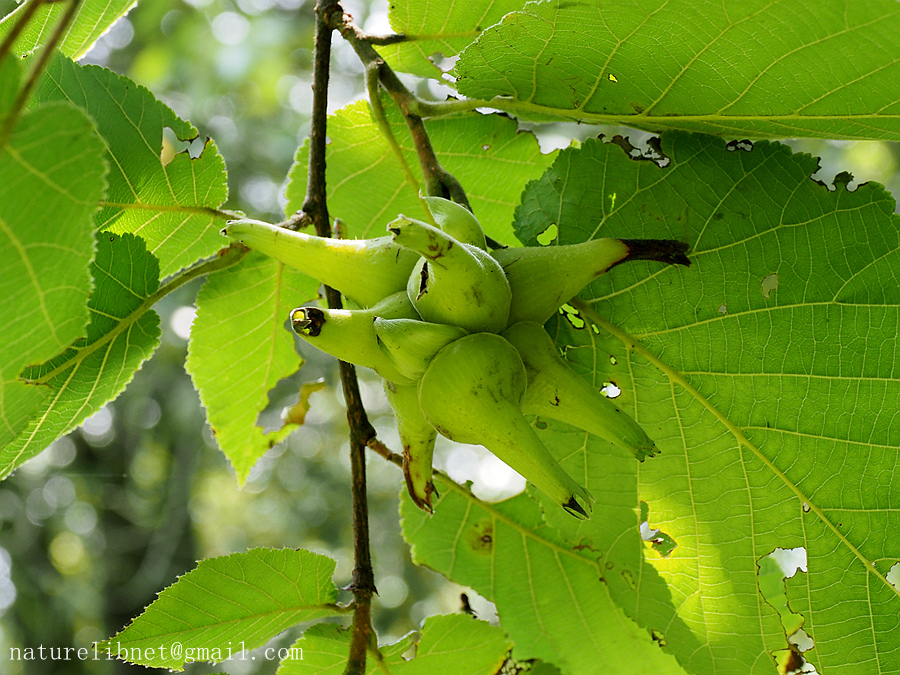- Scientific Name: Corylus chinensis Franch.
- Ref: J. Bot. (Morot). 13: 197. 1899.
- Synonyms: Corylus chinensis var. macrocarpa Hu;
C. colurna Linnaeus var. chinensis (Franchet) Burkill;
C. papyracea Hickel.
- Chinese Common Name: 华榛 huá zhēn
- Family: Betulaceae
- Genus: Corylus
- Distribution: Forests on moist mountain slopes; 1200-3500 m. Gansu, Guizhou, Hubei, Shaanxi, SW Sichuan, Xizang, NW Yunnan, Zhejiang
- Type: Hab.-China occidentalis, provincia Yunnan, in silvis montanis faucium ad San tchang kiou, in via e Tali ad Ho kin, alt. 2200 m. (Delavay, nn. 197 et 212. — Grand arbre ayant un port de Tilleul ; le bois est extrêmement fragile (Delavay, in schedula).
Trees to 40 m tall; bark gray-brown, fissured. Branchlets purplish brown, slender, sparsely villous, stipitate glandular, glabrescent. Petiole 1-2.5 cm, densely villous, stipitate glandular; leaf blade ovate, ovate-elliptic, or obovate-elliptic, 8-18 × 6-12 cm, base obliquely cordate, margin irregularly and doubly serrate, apex mucronate or shortly caudate, abaxially bearded in axils of lateral veins, villous along veins, adaxially glabrous; lateral veins 7-11 on each side of midvein. Male inflorescences 4-6 in a cluster, cylindric, 1.5-2 cm; bracts rhombic-ovate, pubescent. Female inflorescences 2-6 in a cluster; bracts forming a tubular sheath, 2-6 cm, striate, pilose, stipitate glandular, much constricted above nut and deeply divided into linear lobes, usually forked at apex. Nut enclosed by bracts, ovoid-globose, 1-1.5 cm in diam., glabrous.(Flora of China)
